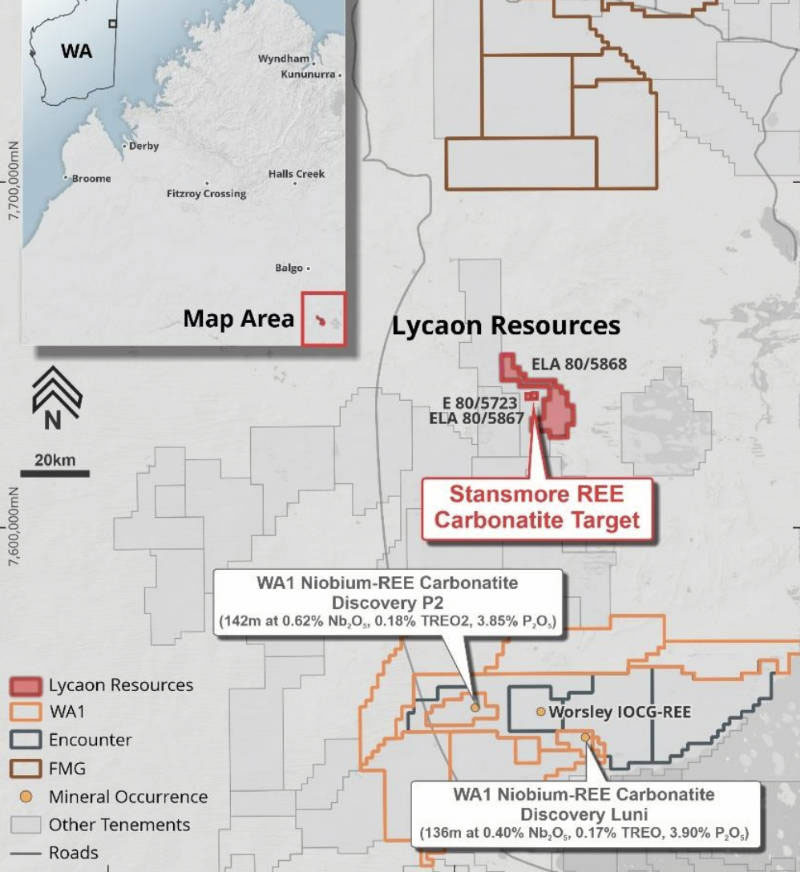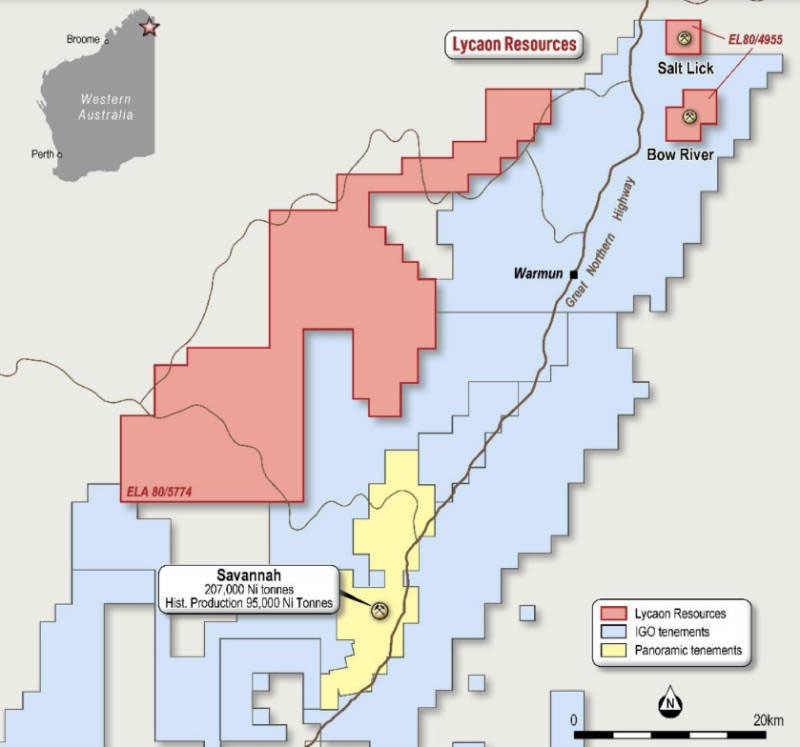Lycaon is ready to push exploration for future facing metals at West Arunta and Kimberley
Mining
Mining
As momentum for the net zero transition grows, demand for forward facing metals like nickel, copper, niobium and rare earths will also grow in parallel – a trend that Lycaon Resources is hoping to catch.
To achieve this objective, the early-stage explorer is focused on advancing its Stansmore niobium and REE project in the prolific West Arunta region and the Bow River nickel and copper project in Western Australia’s East Kimberley region.
While its activity has been constrained by the need to secure access and approvals as well as unseasonal rains, Lycaon Resources (ASX:LYN) now has all its ducks in a row to launch a comprehensive exploration campaign across both projects.
So just what is it about Stansmore and Bow River that has made the company so keen to get to grips with them?
The 172km2 Stansmore project is located about 90km north of WA1’s West Arunta project where drilling has returned numerous thick, high-grade niobium intercepts and Encounter’s Aileron critical minerals project where exploration has defined 3.5km of mineralised carbonatites that host both niobium and rare earths.
Their success provides strong evidence that a large magmatic hydrothermal system has been active in the region.
Stansmore includes a 700m long magnetic feature, which the company’s technical director Thomas Langley described as the most interesting magnetic anomalies outside of those present at the nearby projects.
And it is not hard to see why.
The feature, which is located at the juncture of two major regional faults and has long been recognised as a regionally significant magnetic feature of interest, has striking similarities to both WA1’s niobium-REE carbonatite discovery as well as Encounter’s Worsley IOCG-REE discovery.

Langley told Stockhead that the prominent magnetic and gravity anomaly supports the geological hypothesis for deep intrusives such as carbonatites or IOCG deposits.
“It was on the radar of BHP in the 1980’s and they did some shallow aircore drilling over the magnetic feature,” he added.
“But they were looking for diamonds and there were no assays for REEs or niobium.”
This drilling did prove that the cover at Stansmore is very shallow, averaging between 5-10m, which further enhances the potential for a discovery.
“The opportunity now is to drill this magnetic anomaly with a different perspective looking for niobium and rare earths given there are currently big discoveries being made just down the road at WA1 and ENR,” Langley added.
Bow River is a historical nickel-copper prospect that was discovered in the 1960s within the Halls Creek Mobile Zone in the East Kimberley region.
It hosts mafic intrusives that are sulphidic and similar in style and setting to Savannah, which is located about 60km to the south.
This is intriguing as the 2014 discovery of Savannah North at depth next to the existing mine – and essentially quadrupling the nickel-copper-cobalt resource – has highlighted the significant discovery potential within these mafic intrusives.
Recently a ground gravity survey was completed and the results that came out of that uncovered a very large gravity anomaly at depth that is analogous to Panoramic’s Savannah Mine about 60km to the South.
“It really is the next best nickel copper prospect in the Kimberley outside of Savannah. It’s got all the hallmarks of what Savannah mine did pre-discovery,” Langley noted.
“There’s nickel-copper gossans at surface. It’s a large geochemical anomaly similar to Savannah, shallow historical drilling hit broad zones of 16m and 20m of nickel-copper mineralisation with grades of up to 1% nickel and 1% copper, which is a great start proving this mafic intrusive is mineralised.”
Adding further interest, IGO has tenements all around Bow River and have kept up activity in the region.

These projects are guided by a well credentialled team chaired by former Meteoric Resources’ chairman Patrick Burke, who has extensive experience in capital raisings, mergers and acquisitions.
His time with Meteoric includes the acquisition of the Caldeira REE project, which has a maiden Resource of 271Mt at 3,146ppm total rare earth oxides using a 2,000ppm cut-off.
Langley himself has extensive experience in greenfields exploration, having recently discovered multiple rare earth prospects in the Gascoyne region of Western Australia for Lanthanein Resources.
At Stansmore, the company is finalising the Native Title land access agreement following which it will carry out ground gravity and drone magnetic surveys in the next six months with a view to be drilling by the end of this year.
“We will also continue working with Southern Geoscience, in modelling of geophysical datasets and generation of potential drill targets,” Langley noted.
At Bow River, Lycaon will drill two deep diamond holes down to 800m.
“That’s going to drill through the entire gravity anomaly to leave no stone unturned to confirm if the rock type is peridotite, which hosts the nickel and copper at Savannah,” Langley added.
“If we can confirm it is peridotite and get visual intersections of massive sulphides, we will ramp up drilling significantly at Bow River.”
Drilling is expected to begin shortly in late July.
This article was developed in collaboration with Lycaon Resources, a Stockhead advertiser at the time of publishing.
This article does not constitute financial product advice. You should consider obtaining independent advice before making any financial decisions.